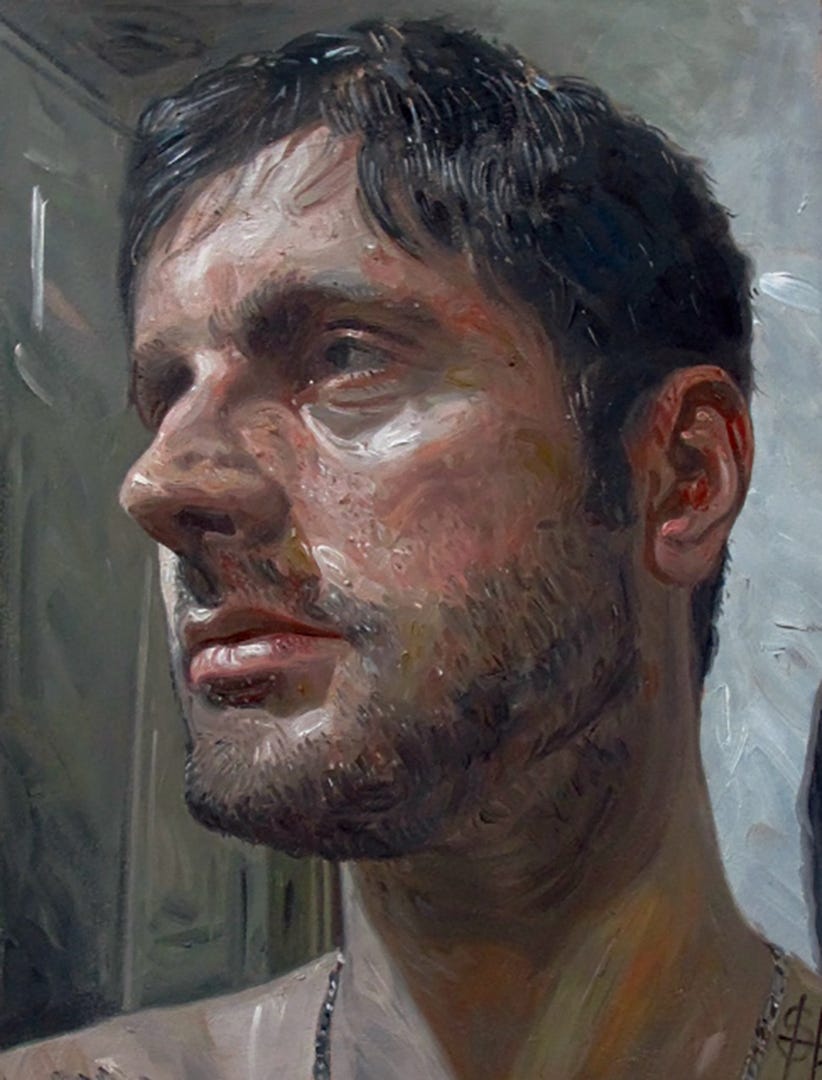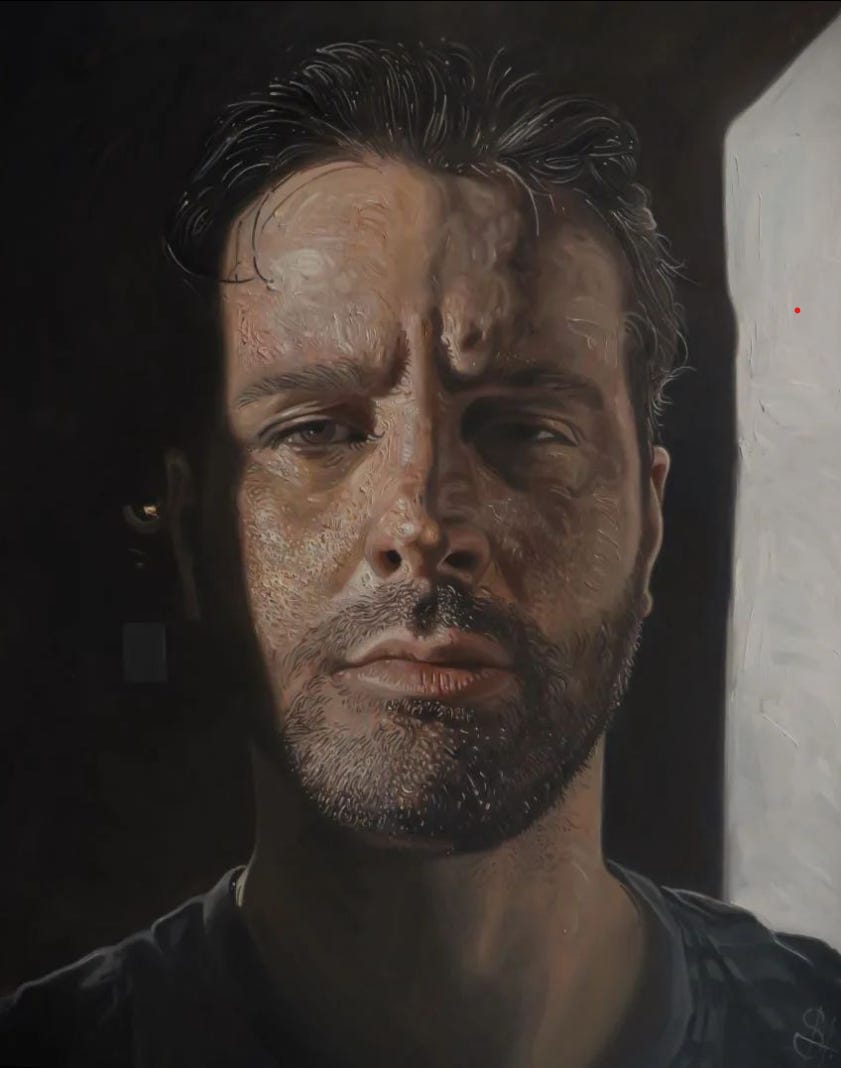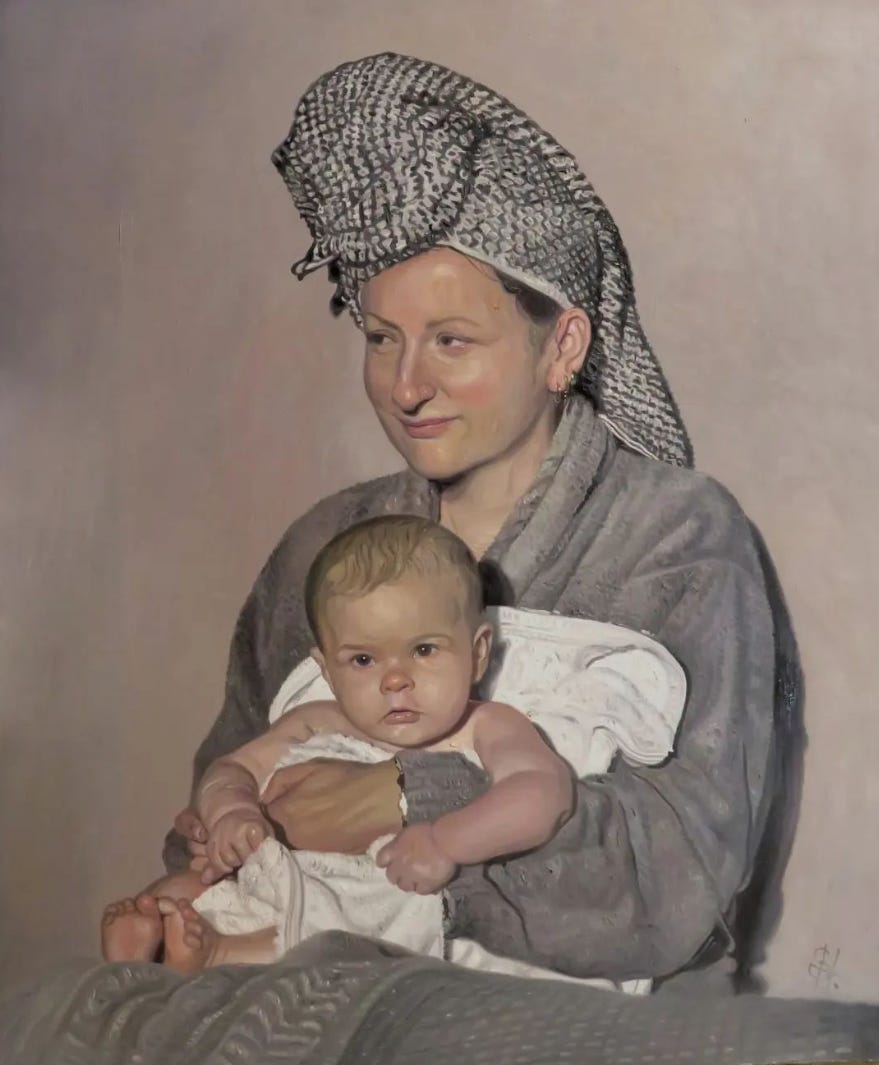I have always been fascinated by the Old Masters, though growing up on an estate in the south of Scotland I had little access to art galleries, so I collected art books instead.
Picture books became an early obsession and I can remember my excitement, aged about four, when my my dad arrived home from a day’s work in the building trade with some huge fabric-bound books from the 18th Century, full of illustrations of exotic animals. He’d found them in an old loft he was working in, and I treasured them like religious tomes. I even took them to school for show and tell, to my teacher’s surprise…
I copied the illustrations from these books relentlessly, along with football stars from my sports magazines — this taught me how to draw, and I became capable from an early age. My mum often says I could draw before I could talk — I was an introverted child, usually hiding behind a sofa with an Etch-a-Sketch or scribbling on fresh blank pages found at the beginning of my mum’s novels.
As I got older, I’d spend my pocket money on materials and art books which I sourced from the second-hand book shop and budget art shop in town…And from here I was initiated to the world of the Old Masters.
One of the first books that fascinated me was about Rembrandt and I would copy his self portraits in my sketchpad. This process took me out of my illustrative phase and made me think more about how art could transcend the the image itself through use of materials. These early studies have stuck with me today and still bleed into my work 30 years later.
The first full copy I did was at the age of about 11, of a painting by Thomas Faed called 'The Last of the Clans'. It was from a Scottish history book I asked for one year at Christmas. It had many large images of oil paintings but for some reason this painting resonated with me. I copied this piece one summer’s day at the kitchen table and it was my first introduction to the medium of oils, although I couldn’t use oil paints at the family kitchen table, so I opted for oil pastels. I remember the richness of this new medium and how it helped render every object like magic.
In a twist of fate, I’ve found a slide of this early attempt while writing and although very naive — we all have to start somewhere — here it is…
Many years later, after graduating from art school, I was luckily enough to win the Aidan Threlfall scholarship from the The Goldsmiths Company in London. It was offered to one graduate from all the art schools in Britain.
I used this opportunity to go on an artistic pilgrimage, visiting London, Paris, Toledo, Madrid, Barcelona, Venice and Rome. The aim was to see the works of Caravaggio, Velazquez , Ribera and Zurbaran. I always had a fascination with these masters of chiaroscuro, and spending time with their works really stuck with me.
This experience ignited a new-found love for European travel, and from my early 20s I regularly took city breaks, spending my time walking through the incredible work of the major European galleries with my partner, trying to soak up as much information as possible.
Last time I visited The Louvre, I decided to specifically focus on the paintings and technique of Van Dyke. It was surprisingly quiet in these areas, away from the the frenetic crowds in the Italian Renaissance rooms, and I spent a long time meditating on his technique, how confident his application of paint was and how he layered it on the highlights to create depth and atmosphere.
Recently I managed to make a copy of his painting 'Portrait of Cornelis Van der Geest' (below) in my studio. I was blown away after seeing the original in London several times.
Making these copies have served as invaluable lessons in technique. And I think in an age of airbrushed realism we see online, it’s important to realise to how sculptural these paintings are, with the use of material as important as the imagery itself.
It’s apparent that throughout my art career, the influence of these images have served me well. When starting a new composition, a painting from the past usually appears from my subconscious to guide me along with my new project. This might seem a bit contrived or old fashioned to be stuck in the past, but if you look at the work of the Old Masters, they painted their world, their time and their experiences. And in an age where celebrity seems to be one of the biggest influences in the online art world, I think it’s important to tell our story, no matter how intimate. Therefore you can use the past as a conduit to create contemporary and fresh ideas that resonate with now. We live in very interesting times, and in the future hopefully the work of my contemporaries and I will reflect something of what it was like to be alive today.
With current circumstances, travelling for me is on hold, so I have come full circle and returned to using my books for influence. The antithesis of digitalisation, these picture books can be found for pennies and kept in my studio, ready to be picked up in those times of least inspiration.
So if I had any advice for aspiring artists, I would say look and learn and copy from the Masters. And use this inspiration to reflect your world.
This is my latest piece and my first painting of 2023, Mother and Child.
As always, comments and queries can be left below, or by replying to this email. Many thanks for reading.






